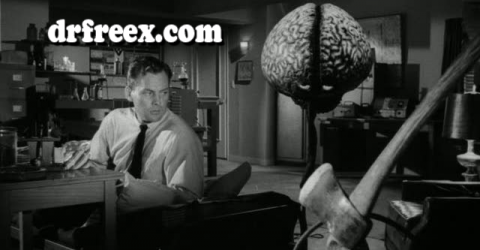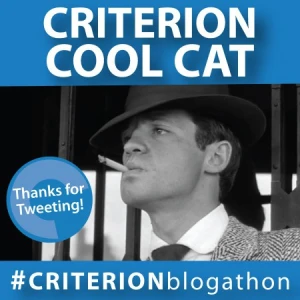 Click ^^ for Hubrisween Central, here for our Letterboxd page.
Click ^^ for Hubrisween Central, here for our Letterboxd page.
Oh dear God, not Jess Franco again! Why? Whyyyyyyyyy
 What’s that you say? It’s not Jess Franco? It’s Pierre Chevalier? And what is more, you claim that after the first ten minutes, I am going to be begging for the return of Jess Franco? Pish tush, I say! And furthermore, folderol!
What’s that you say? It’s not Jess Franco? It’s Pierre Chevalier? And what is more, you claim that after the first ten minutes, I am going to be begging for the return of Jess Franco? Pish tush, I say! And furthermore, folderol!
You are, incidentally, going to be right.
This is known by many names – even on its own DVD. Sure, the cover says Orloff and the Invisible Man, but the menu claims it’s Orloff Against the Invisible Man. Go to the IMDb and it’s Dr. Orloff’s Invisible Monster. In the UK, The Invisible Dead. And if you use Letterboxd, it’s the original title, The Love Life of the Invisible Man. That last one is going to turn out to be – rather horrifyingly – the movie’s raison d’etre.
We are apparently once a-goddamn-gain in some superstitious 19th century Carpathian village, and the new doctor in town can’t understand why no one wants to take him to the castle of Professor Orloff for an emergency call. At least the doctor in Kill Baby… Kill! made it almost to his destination, this poor sod gets ditched in the middle of nowhere, and in a rainstorm, to boot.
Dr. Garandet (Paco Valladares) finally makes it to Castle Orloff, where the two remaining servants also refuse to tell him what’s going on. He finally talks with Orloff’s daughter, Cecile (Brigitte Carva), who tells him she’s seen an invisible man, and also her father is always in his laboratory. Papa, of course, is Professor Orloff (Howard Vernon), who not only somehow survived our last encounter with him at the other end of the alphabet, but also managed to add an “f” to the end of his name.
 Oh, good God, why keep pretending? This has absolutely nothing to do with that Orloff except it’s still Howard Vernon, and he’s still tampering in God’s domain like a mofo. In this case, he has created an Invisible Man (exactly how is never revealed), an entirely new form of life which is “Intelligent and obedient” and will rule the world, or something mad science like that.
Oh, good God, why keep pretending? This has absolutely nothing to do with that Orloff except it’s still Howard Vernon, and he’s still tampering in God’s domain like a mofo. In this case, he has created an Invisible Man (exactly how is never revealed), an entirely new form of life which is “Intelligent and obedient” and will rule the world, or something mad science like that.
But never mind that, let’s while away the next twenty minutes with the tale of how, six years ago, Cecile had some sort of cataleptic fit and was interred alive, and saved only by two wicked servants robbing her grave for the jewelry. When she revived, they panicked, stabbed her, and ran off. Well, the smart one, the woman (Isabel del Rio) ran off, the man stuck around to be used for experiments. Oh, don’t worry, the woman is tracked down with dogs, which causes her blouse to unbutton.
You see, to get back to the Invisible Man stuff, and the Love Life thereof, if you see a woman under the age of 30 in this movie, you can rest assured that at some point you are going to see her naked. Isabel del Rio, to convince her fellow servant to do some grave robbing, will coquettishly (ie., slowly) change into a nightshirt. Then take it off and put her clothes back on for some resurrectionist action. The one remaining female servant in the castle – who is the one who sent for Garandet – will be punished by handing her over to the Invisible Man, mainly because Orloff “wants to see what he will do with a human female.” It involves the poor girl jerking herself around, trying to convince us that she is being pulled along by something invisible, and then manhandling herself on a bed of hay. Then, when we thankfully start running short on time, the Invisible Man also wants to rape Cecile, so say goodbye to that particular nightgown, too.
(I must give Image Entertainment props for giving us, as a DVD extra, the Alternate Clothed Footage of these scenes, unlike yesterday’s feature)
In other words, a better title would have been The Rape Life of the Invisible Man. The plot is entirely superfluous, and were we not distracted by naked breasts and unshaven pudenda (I would like to thank modern pornography for making pubic hair exotic again), the entire enterprise would be so generic and unoriginal, so padded with lugubrious claptrap, that the only way to deal with it would be to take a restful nap or perhaps read a book while you coexisted in the same room with it during its mercifully brief 82 minutes.
There are points at which somebody on the crew said, “Hey, you know, that Bava guy’s been doing some pretty cool stuff” and breaks out the colored gels in the numerous catacomb scenes, but overall the scenes are way too brightly lit – there are obviously big lights on the other side of the camera, eliminating all atmosphere and period ambience. There is also a bizarre reliance on close-ups that are out-of-focus, but now perhaps I’m just being bitchy.
The invisible effects are, at least, handled pretty well… at least until Garandet tosses some flour on the Invisible Man and we discover it was a man in a monkey suit all this time. Don’t believe me? Here:
Soccer blue! Buy Orloff and the Invisible Man on Amazon!









